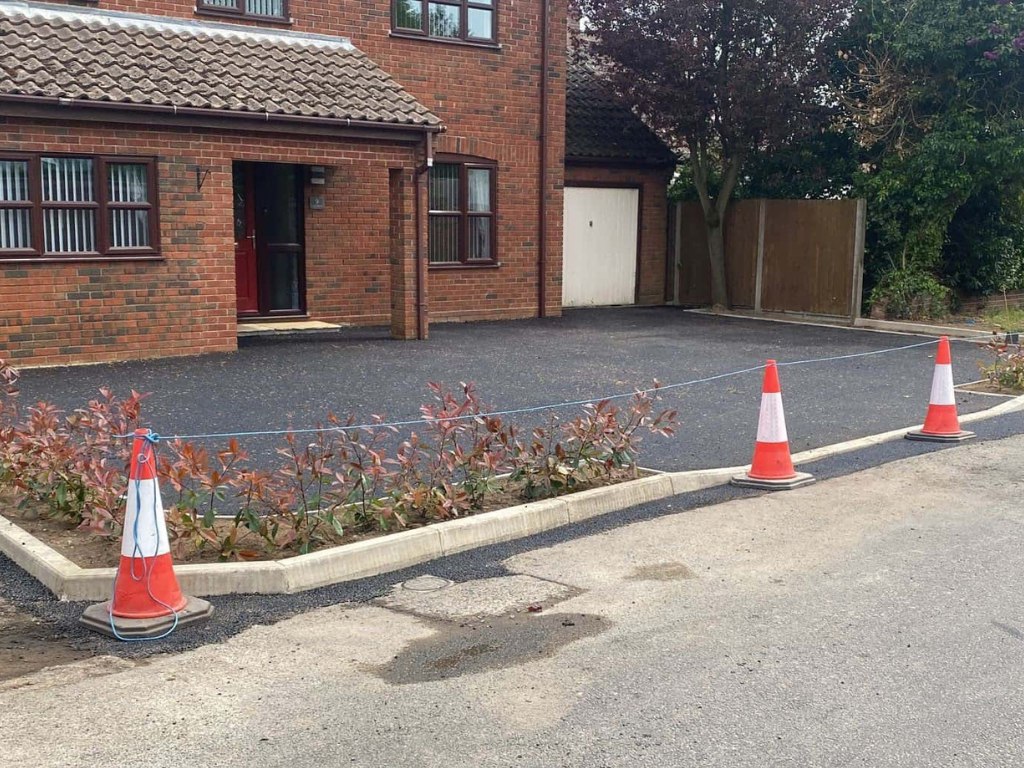Tarmac Surfacing for School Playgrounds: Safety and Fun
Introduction: At Kempston Driveways & Patios, we understand the importance of creating safe and enjoyable environments for children to play. Tarmac surfacing has become popular for school playgrounds due to its durability, safety features, and versatility. This blog post explores why tarmac is an excellent option for school playgrounds, focusing on safety considerations and its benefits to enhance outdoor play areas.
The Benefits of Tarmac Surfacing in School Playgrounds
1. Safety First: Safety is paramount in school playgrounds. Tarmac surfaces provide a smooth, even playing area that reduces the risk of trips and falls. Compared to natural surfaces like grass or gravel, tarmac minimises uneven terrain and mud, creating a safer environment for children to run and play.
2. Durability and Longevity: School playgrounds experience heavy foot traffic and frequent use. Tarmac is highly durable and can withstand the rigours of daily play activities, including sports and games. Its robust nature ensures longevity with minimal maintenance, making it a cost-effective choice for schools.
3. Versatility in Design: Tarmac can be tailored to suit various playground designs and activities. It allows for incorporating colourful markings for games like hopscotch, four square, and running tracks. Additionally, it can be used to create designated play zones for different age groups, promoting organised play and social interaction.
4. Accessibility: Tarmac provides wheelchair accessibility, ensuring all children can participate in outdoor activities. Its smooth surface allows for easy movement of mobility aids, promoting inclusivity and integration among students.
5. Quick Installation and Minimal Disruption: Installing tarmac surfaces is efficient and causes minimal disruption to school activities. This ensures that playgrounds can be quickly upgraded or renovated without extended downtime, allowing children to resume play in a safe and improved environment.
Safety Features of Tarmac in School Playgrounds
1. Slip Resistance: Tarmac surfaces can be treated to enhance slip resistance, reducing the risk of accidents during wet weather or play activities. This feature is crucial for maintaining a safe environment, especially in unpredictable British weather conditions.
2. Impact Absorption: Underneath the tarmac surface, shock pads or rubberised underlays can be installed to absorb impact and cushion falls. This additional layer enhances safety, particularly in playgrounds with climbing frames and play equipment.
3. UV Stability: Tarmac is UV stable, meaning it can withstand prolonged exposure to sunlight without fading or degrading. This ensures that playground markings remain vibrant and visible, creating a stimulating and engaging play environment.
Maintenance Tips for Tarmac Playground Surfaces
To keep tarmac playground surfaces in optimal condition and ensure continued safety, consider the following maintenance tips:
- Regular Inspections: Conduct routine inspections to promptly identify and address any cracks, potholes, or damage.
- Cleaning: Regularly clean the surface by removing debris, leaves, and litter. This prevents deterioration and maintains a tidy appearance.
- Re-sealing: Apply a sealant every few years to protect the tarmac from weathering and extend its lifespan. This helps maintain its safety features and durability over time.
- Markings and Play Equipment: Inspect playground markings and play equipment for wear and tear. Repair or repaint markings as needed to ensure visibility and safety during play.
Conclusion: Tarmac surfacing is an excellent choice for school playgrounds, combining safety, durability, and versatility to create engaging outdoor environments for children.
Call us on: 01234 675 786
Click here to find out more about Kempston Driveways & Patios
Click here to complete our contact form and see how we can help you with your driveway needs.

